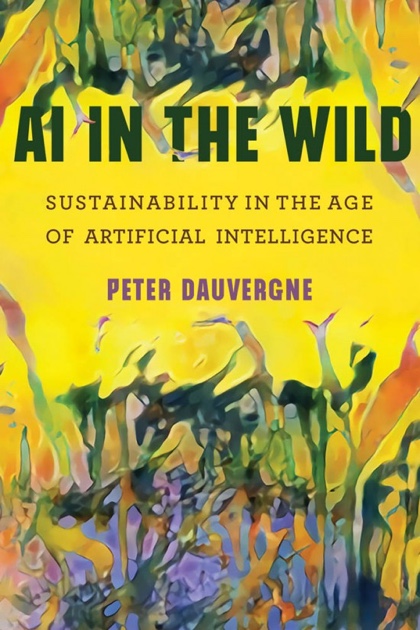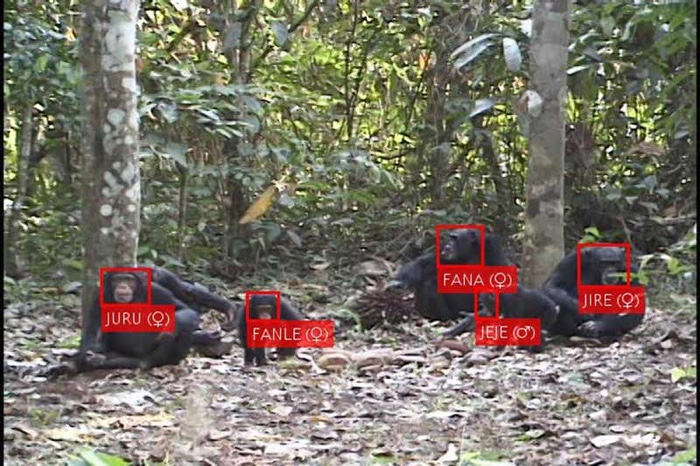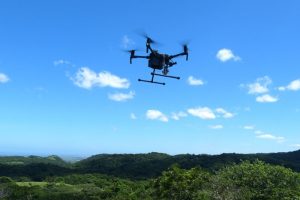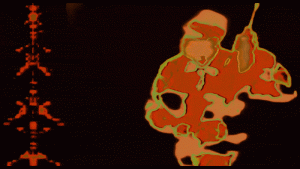AI in the Wild. Sustainability in the Age of Artificial Intelligence, by Peter Dauvergne, author, environmentalist and Professor of International Relations at the University of British Columbia.
 MIT Press writes: Drones with night vision are tracking elephant and rhino poachers in African wildlife parks and sanctuaries; smart submersibles are saving coral from carnivorous starfish on Australia’s Great Barrier Reef; recycled cell phones alert Brazilian forest rangers to the sound of illegal logging. The tools of artificial intelligence are being increasingly deployed in the battle for global sustainability. And yet, warns Peter Dauvergne, we should be cautious in declaring AI the planet’s savior. In AI in the Wild, Dauvergne avoids the AI industry-powered hype and offers a critical view, exploring both the potential benefits and risks of using artificial intelligence to advance global sustainability.
MIT Press writes: Drones with night vision are tracking elephant and rhino poachers in African wildlife parks and sanctuaries; smart submersibles are saving coral from carnivorous starfish on Australia’s Great Barrier Reef; recycled cell phones alert Brazilian forest rangers to the sound of illegal logging. The tools of artificial intelligence are being increasingly deployed in the battle for global sustainability. And yet, warns Peter Dauvergne, we should be cautious in declaring AI the planet’s savior. In AI in the Wild, Dauvergne avoids the AI industry-powered hype and offers a critical view, exploring both the potential benefits and risks of using artificial intelligence to advance global sustainability.
Dauvergne finds that corporations and states often use AI in ways that are antithetical to sustainability. The competition to profit from AI is entrenching technocratic management, revving up resource extraction, and turbocharging consumption, as consumers buy new smart devices (and discard their old, less-smart ones). Smart technology is helping farmers grow crops more efficiently, but also empowering the agrifood industry. Moreover, states are weaponizing AI to control citizens, suppress dissent, and aim cyberattacks at rival states.

Face recognition for chimpanzees. Photo: Kyoto University, Primate Research Institute
AI has the potential to both save and destroy life on Earth. On the one hand, its developers and marketers promise that the widespread implementation of intelligent systems will promote global sustainability, conserve nature, manage ecosystems, monitor the intensification of climate change and protect endangered wildlife. On the other, there’s the reality: AI, though it has value and potential, is often used as yet another greenwashing tool that stealthily invigorates existing systems of domination, exploitation, accumulation and oppression. It’s no surprise then if the groups that massively invest in AI are transnational corporations and states (most notably the US, Russia and China) which tend to see in AI the key to unlocking even more profit, more power, more control over resource extraction, production and consumption.
QUT’s LarvalBot, the undersea robot that delivers coral larvae to damaged reefs
The sheer physical and geological dimensions of AI are staggering. Not only will building all those autonomous vehicles, those smart devices and their accompanying infrastructures involve massive extraction of minerals and energy production but they will further shorten the lifespan of the electronics we already own, making the management of e-waste even more uncontrollable in terms of human right abuses and pollution.
Even the data necessary to feed AI comes at a huge environmental cost. Datafying life on Earth, whether it’s personal relationships, bees or toasters, will require the construction of new data centres. No matter how “green” Bezos and Zuckerberg claim their data centres are, wind turbines and solar panels still require the extraction of minerals. And even if that were not the case, the rebound effect of implementing 5G, autonomous cars, robots and IoT means that the amount of data to be stored in data centres will explode.
Those of you who already find it difficult to believe that the road to more sustainability is paved with a plethora of new smart appliances probably already know much of the above. And when Dauvergne gets to grip with smart cities and the likelihood that no amount of urban smartness is going to have much of an impact on feelings of alienation, on income inequality and on unbridled consumerism, his discourse might not be unfamiliar to most of you either. However, I learnt a lot from the chapter on smart farming equipment and AI implementation in agriculture and the way they are only going to reinforce the broken system put in place by the likes of John Deere, Bayer Monsanto, DuPont and other membres of an agro-industry that privileges profits over nutritional needs.
Another highlight of the book for me was the section on social justice and inequality. It discusses the well-known consequences of AI biases but it also illuminates how the diffusion of AI facial and emotion recognition technology constitutes a powerful tool in the hands of states that could use them to target, censor and repress citizens who question the environmental and social costs of the current economic and technological growth trajectory.
I can’t say that AI in the Wild is revolutionary. Maybe because I’ve been looking closely at the carbon footprint of AI for a number of years now. But I’m glad I read the book. It provides an invaluable panorama of the environmental, political, economic and ethical weaknesses of AI. The text flows, the language is clear and way the author sums up AI most damaging failures is always pertinent and thought-provoking. Dauvergne tries to keep a balance between AI potential and AI oversell throughout the book but concludes that AI won’t save the Earth on its own, especially if it is not accompanied by sweeping political and economic reforms that would ensure that environmental principles are integrated into the design of AI and that companies and states are held accountable for the many ways AI is accelerating unsustainable production and excessive consumption.







